Living Lake Symposium 2017
The 6th Living Lake Symposium was held on the 9th and 10th of November 2017.
The Te Waihora/Lake Ellesmere State of the Lake 2017 was released. 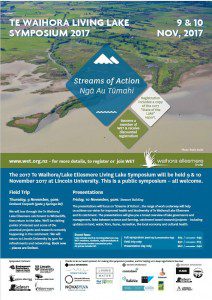
Thanks to everyone who made this event possible (see below for details of our sponsors).
Field Trip – Thursday November 9th
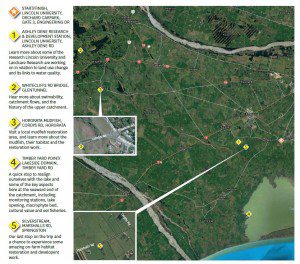 Two buses left Lincoln University at 9 am sharp to travel to the Ashley Dene Research and Development Station. Here we heard about research being done by Lincoln University and Landcare Research on land use change and its links to water quality.
Two buses left Lincoln University at 9 am sharp to travel to the Ashley Dene Research and Development Station. Here we heard about research being done by Lincoln University and Landcare Research on land use change and its links to water quality.
Our next stop was Whitecliffs Domain, Whitecliffs where James Guild spoke of the history of the area and Dr Tim Davie (Environment Canterbury) spoke about swim ability and catchment flows.
The Hororata property of Olive and Carol was our next stop. Along with Johannes Welsch (Environment Canterbury Biodiversity Officer) they showed us the habitat restoration they have done on their property. The plantings have not only helped to protect the waterway and mudfish habitat but also has increased native biodiversity by attracting a number of native birds and insects.
At Glentunnel, Elizabeth Guthrie of Te Ara Kākāriki spoke about their work in the catchment – establishing greendots of native plantings.
After lunch, provided by Glentunnel School (a fund raiser for them), we headed back down the catchment to Te Waihora. At Lakeside Domain we were greeted by Craig Pauling who spoke about the importance of the lake to Ngai Tahu and Clem Smith who spoke about the fishery in the lake. Our last stop of the trip was a visit to Silverstream on Marshalls Road. This gave us a chance to experience some amazing on-farm habitat restoration done by the land owners and to hear the work done by the CAREX team (Canterbury Waterway Rehabilitation Experiment).
Thanks to the many speakers at the sites and on the buses whom made for a very interesting and informative day.
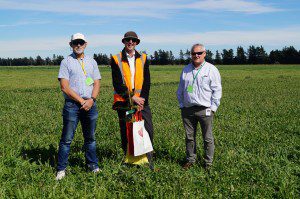 |
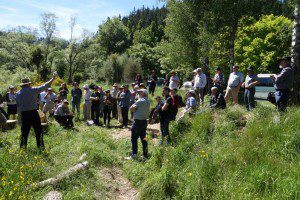 |
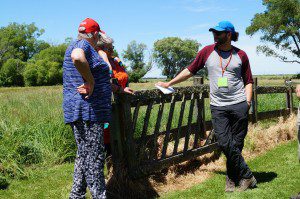 |
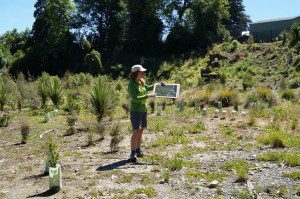 |
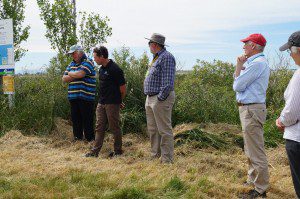 |
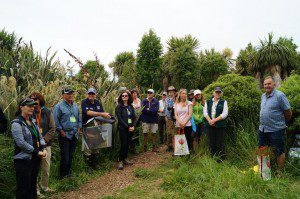 |
Presentation Day – Friday November 10th
We gathered together for the start of the presentation day with a Mihi Whakatua from the Taumutu Runanga. Ray Maw the Chair of Waihora Ellesmere Trust welcomed everyone and introduced the two Kens: Ken Taylor (Our Land and Water National Science Challenge and Professor Ken Hughey (Lincoln University), who set the scene for the day.
Liz Brown, member of the Co-Goverance Group, gave an amazing opening statement to start the presentation day off.
Opening Statement – Liz Brown (Member of Co-Governance Group)
The day was divided into five sessions each followed by a panel discussion/questions chaired by Ron Pellow.
Session 1: Upstream
Central Plains Water – Fiona Crombie
Targeted Stream Augmentation including near-river recharge – Brett Painter (Environment Canterbury)
Importance of mudfish re-establishing – Angus McIntosh (University of Canterbury)
Session 2: On Farm
Cultural Landscape/Values Management Area – Mananui Ramsden (Environment Canterbury)
Session 3: In the Lake
Fisheries Management Kohanga area/mahinga kai – Dr Shannan Crow (NIWA)
Australasian Bittern research update – Donna Worthy (Department of Conservation)
Session 4: Out There
Next generation solutions – Robyn Dynes (AgResearch)
Land use suitability work – Scott Larned (NIWA)
Reducing nitrogen losses on farms – David Whitehead (Landcare Research)
Report on state of the flows – Tim Davie (Environment Canterbury)
Session 5: Selwyn Waikirikiri
The day was finished off with thanks and acknowledgements from Ray Maw.
Te Waihora Living Lake Symposium 2017 – Acknowledgements
Thanks to all the speakers for their really informative presentations and a special thanks to Ron Pellow who chaired the day. Also thanks to the groups who put up some wonderful displays in the foyer of Stewart Building.
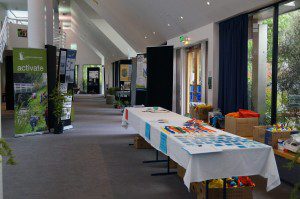 |
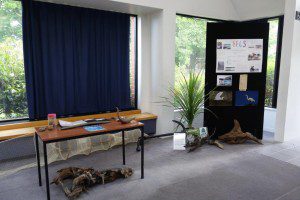 |
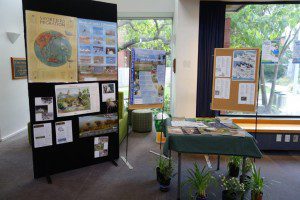 |
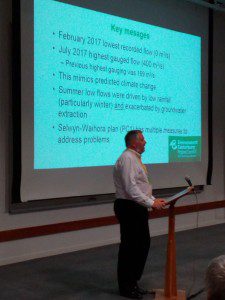 |
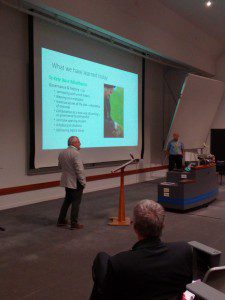 |
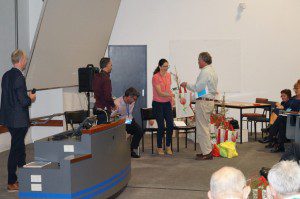 |
Thanks to all partner organisations (listed at the bottom of the poster) and sponsors (listed below) for making this event possible and for allowing us to keep registration fees very low.

